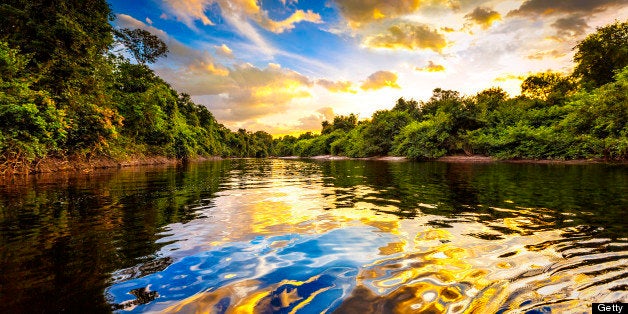
In the March 13, 2016 Sunday Review section of The New York Times, eminence gris E.O. Wilson proposes "The Global Solution to Extinction." Addressing the disappearance of life forms currently occurring on Earth at a rate 1,000 times faster than "normal," Wilson points out that we are talking so much about climate change we are forgetting that protecting biodiversity is more important.
We're focusing on the nonliving, physical environment. "But Earth's living environment, including all its species and all the ecosystems they compose," is receiving little attention. This is a strategic mistake, since if we "save" the nonliving environment but don't adequately safeguard the biological world, "we will lose them both." Since species interactions help moderate the atmospheric carbon cycle, saving biodiversity will actually help stabilize the nonliving system as well.
Wilson's prescription to "save half" of Earth's surface for biological life has its critics, mostly from the social sciences. Writing in Aeon, Robert Fletcher and Bram Buscher say that Wilson wants to turn "half of the Earth into a series of nature parks," and they say that doing so will be onerous to local people who will be turned out from their homes or unreasonably enjoined from their customary life ways, which might be considered antithetical to nature protection. Fletcher and Buscher play fast and loose in their reading of Wilson. Wilson does not advocate for "nature parks," but for integrating nature more completely into the human built environment where appropriate.
Wilson made a seminal contribution to how we understand extinction with the 1967 publication of The Theory of Island Biogeography, co-written with Robert MacArthur. Wilson and MacArthur established that the smaller and farther away from a mainland an island is, the faster species on it will go extinct, partly because of the slower rate by which newcomers get there. The bigger an island and the closer it is to a mainland source, the more species it will support.
While fragments of terrestrial landscapes surrounded by human impacts are not exactly like islands in the water, the extinction formula basically holds true on land. One of Wilson's major directives is that we protect corridors between large swaths of wilderness to address this increasing isolation of nature's last places. The large carnivores we have left -- in California that's mostly mountain lions -- need territories much larger than any single protected area can provide. Just ask P22, the Mountain Lion of Hollywood, who braved eight lanes of freeway traffic trekking from his natal home in the Santa Monica Mountains, to make a new home in Griffith Park in downtown Los Angeles.
Mountain lions with safe passage from one big wild area to another find opportunity to mate with others of their own kind from different genetic populations, which prevents inbreeding, a cause of extinction. (P22 is not likely to find a partner, however.) Protection at the scale of top carnivores naturally acts as an umbrella for species lower down the food chain, so that connectivity can occur at a variety of scales and through myriad mechanisms. Another example of connectivity is in the urban environment. Here in San Francisco, native bees pollinating the smorgasbord at the botanical garden help provide connectivity for their brethren bees in surrounding areas. This is what Wilson means by "half." He's not advocating for taking slices out of nature but for stitching pieces of it together through biotic interactions -- and these require habitat.
There's no reason why connectivity cannot permeate all the way through urban, built environments, and extend out through bigger, wilder protected areas like national parks and landscapes safeguarded by land trusts. But if they are not connected, then those special areas become islands and the species in them will go extinct at a faster rate, despite our protective efforts. Species need to move, and they need to interact at many scales.
Social critics of conservation who claim that protecting nature comes unreasonably at the expense of people are paradoxically making an argument that humans and nature are separate entities. But underserved people in metropolitan areas as well as indigenous people in relatively remote countries depend on nature as much as anyone else does to live -- to breathe, to drink water, to eat food. The atmospheric, hydrological, and geological carbon cycles are all part of one bigger cycle, and there is no human category that can be considered as separate from it.
If we continue to cut down Amazon rainforest, for example, because some indigenous people rely on money from illegal logging, they will eventually suffer just like the rest of us. The U.S. has done pretty well with protecting nature, but our task now includes taking a big conceptual look at what we've done to make sure individual efforts are connected. For nature to persist, we need a vision of "all," or else we'll be stuck with nothing.
